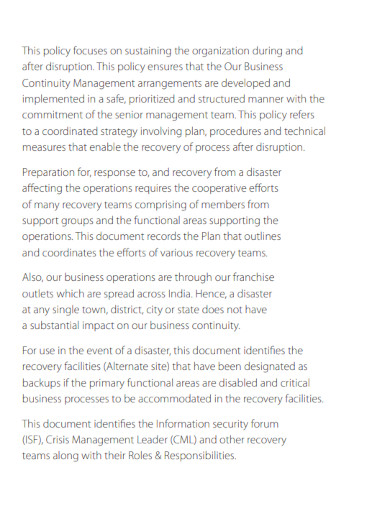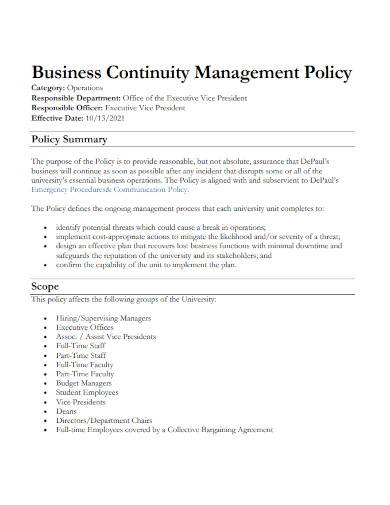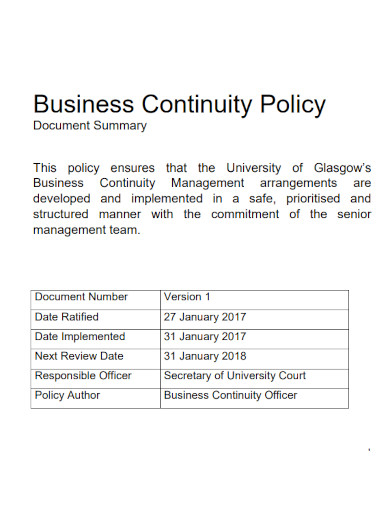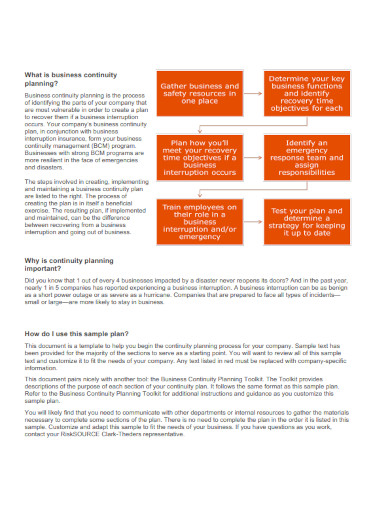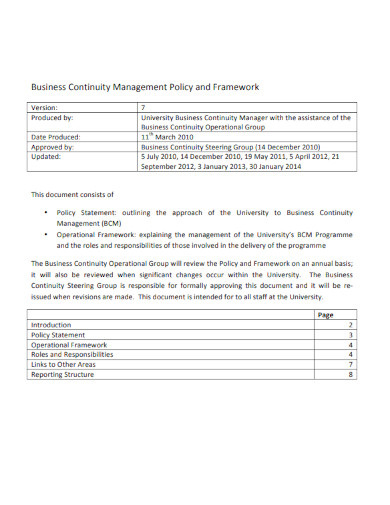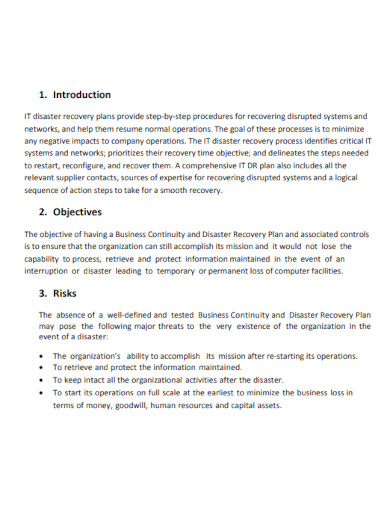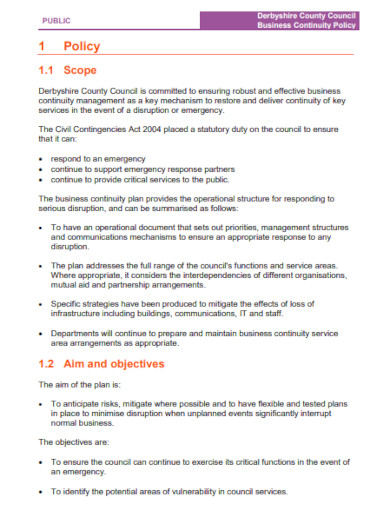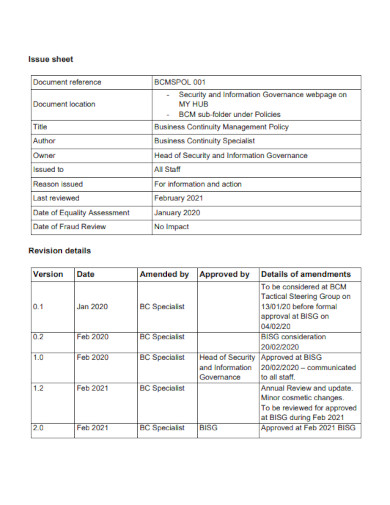8+ Business Continuity Policy Samples
Businesses typically ignore the importance of a business continuity strategy. No one notices it’s gone until disaster strikes. At that time, it’s too late. Any unplanned interruption in normal business activities might cause major delays and financial losses. Things go wrong when it comes to operations. Unexpected means unplanned, irrespective of the nature. If you have a business continuity plan in place, you can minimize the impact and harm of an unexpected event. Create a rigid policy with our help– we’ve got you covered! In this article, we provide you with free and ready-made samples of Business Continuity Policies in PDF and DOC formats that you could use for your benefit. Keep on reading to find out more!
1. Business Continuity Policy
2. Business Continuity Management Policy
3. Business Continuity Policy Example
4. Sample Business Continuity Plan Template
5. Business Continuity Management Policy Framework
6. Disaster Recovery Business Continuity Plan
7. Sample Business Continuity Policy
8. Business Continuity Planning Policy
9. Business Continuity Management Policy Example
What Is a Business Continuity Policy?
Developing a practical strategy for how your firm can prepare for, and continue to function after an incident or crisis is part of business continuity planning. is the procedure for developing a system for preventing and recovering from possible hazards to a business. In the case of a crisis, the plan guarantees that workers and assets are safeguarded and that operations can resume rapidly. A business continuity strategy will assist you in identifying and minimizing risks to the extent practicable. Prepare for hazards you have no control over. Its purpose is to safeguard workers and assets while also ensuring that they can function swiftly in the event of a crisis.
How to Make a Business Continuity Policy
It entails identifying any and all hazards that may have an impact on the company’s operations, making it a crucial component of the risk management strategy. A Business Continuity Policy Template can help provide you with the framework you need to ensure that you have a well-prepared and robust policy on hand. To do so, you can choose one of our excellent templates listed above. If you want to write it yourself, follow these steps below to guide you:
1. Check with the authorities for state or departmental policies and regulations.
Finding out if your company must comply with any standards from federal or international organisations, state authorities, or industry-specific rules is the first step in developing a BCP strategy.
2. Make a risk evaluation.
The second stage is to conduct a risk assessment on your company, which will allow you to identify and prioritize possible business risks and interruptions based on their severity and likelihood of occurrence. The purpose of a risk assessment is to categorize hazards that are acceptable and against which you would want to take action, whether that action is mitigation, contingency planning, or leaving things alone.
3. Make a business impact assessment.
In this phase, you should go through the functions and tools that are important to each of the many components that make up your company. This data is extremely useful for creating recovery point and recovery time targets for important functions. You can establish the maximum amount of downtime your organization can endure by doing a complete business impact study.
4. Begin strategizing and developing strategies.
After you’ve completed your risk assessment and business impact study, the fourth phase is to consider your overall strategy and the creation of your BCP. The formulation of plans for each department, division, and site level contingency requires a synthesis of your risk assessment and business impact analysis results.
FAQ
What are the three plans for a continuity strategy?
Companies must separate business continuity planning into three phases: planning and prevention (resolve phase), disaster response (respond phase) and, return to normal (rebuild phase).
What is the most crucial aspect of a business continuity strategy?
Workplace recovery, cyber resilience, change management, and numerous other features are essential components of a business continuity strategy.
Who is in charge of the business continuity plan?
Under the supervision of the program manager, business unit leaders are responsible for developing their particular unit’s business continuity strategy.
A business continuity strategy prepares your company to withstand major disruptions. It clears up the misunderstanding that comes with every crisis by laying out a clear plan for everyone to follow. To help you get started, download our easily customizable and comprehensive samples of Business Continuity Plans today!
Related Posts
Weekly Schedule Samples & Templates
Contractual Agreement Samples & Templates
FREE 9+ Amazing Sample Church Bulletin Templates in PSD | PDF
Sample Business Card Templates
Sample Cashier Job Descriptions
Questionnaire Samples
FREE 10+ Sample HR Resource Templates in PDF
FREE 10+ HR Consulting Business Plan Samples in MS Word | Google Docs | Pages | PDF
FREE 49+ Sample Job Descriptions in PDF | MS Word
FREE 16+ Nonprofit Budget Samples in PDF | MS Word | Excel | Google Docs | Google Sheets | Numbers | Pages
FREE 13+ Academic Calendar Templates in Google Docs | MS Word | Pages | PDF
FREE 10+ How to Create an Executive Summary Samples in Google Docs | MS Word | Pages | PDF
FREE 23+ Sample Event Calendar Templates in PDF | MS Word | Google Docs | Apple Pages
Company Profile Samples
FREE 10+ Leadership Report Samples [ Development, Training, Camp ]

